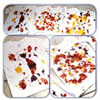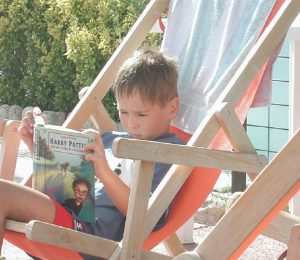My previous post addressed the topic of decorating kids’ rooms and how to create a happy medium between your decorating style and your child’s. But once you’ve got the decor to everyone’s liking, what’s the best approach to keeping it tidy, at least to a cleanliness standard that you can all live with, if not decor-magazine-spread ready? Here are some ideas to help sort things out, rather than resorting to simply sweeping it all under the rug.
To foster independence, managing tidiness in your kids’ rooms often works best if guided and encouraged rather than enforced. As with decor, your child’s room can be allocated as their ‘own domain’ in terms of keeping it tidy, on which you can close the door. If taking this approach, some basic ground rules should apply, such as absolutely no food allowed in their room. If you’re doing their laundry, they must bring it to the laundry room and take it back to their room when clean. Or, if they are at the stage of doing their own laundry then they need to follow the simple rule that they are not allowed to wear dirty clothes.
But if cleanliness carte blanche doesn’t reflect your own tidy personae, perhaps some other tactics of engagement and practical decor are in order.
Pride of place – Room decor that reflects their own personality and interests will encourage a personal pride in your child. A policy of cleaning up for when friends come over communicates that pride to their peers.
A spot for each item – A place for everything, and everything in its place is an adage that rings true in kids’ rooms. With a spot for everything, they’ll be more apt to put everything back in its place and will increase their enjoyment next time when it isn’t a chore to find a misplaced item.
Provide bookshelves and wall shelves for, well, books but also for displaying cherished collections. Provide built-ins, storage units, hooks, bins, and baskets, all at a height and position that is easy for a child to access no matter what stage of growth. Label shelves and bins to clearly organize what goes where – use words if your child is old enough to read, or photos and symbols if not – making keeping tidy easier.
Make it a routine – Set up a clean-up routine policy that works for your child, family, and lifestyle, such as: making their bed each morning; putting one toy or project away before bringing out or starting another; hanging backpacks when returning from school; cleaning up before the privilege of playing video games or watching television; tidying their toys before bedtime.
Provide assistance – Reflective of your child’s age, provide the assistance they need to get the tidying up rolling. For younger children, help them with the task and engage them with games or stories that encourage clean up, while teaching them independence and responsibility for their things.
Reduce, reuse – Today, many kids have so much more ‘stuff’ than they need, while others do not. For those who do, if possible employ the policy of ‘one item in, one item out’, keeping the number of toys down to a minimum and don’t be too quick to replace anything that goes missing or breaks. Try a schedule of monthly purging (a good practice for us adults in other areas of our homes), fostering a practice of donating items and clothing to charity that the child has out-grown or has lost interest in, reinforcing the positive environmental impact they are making in the ‘reuse’ loop.
Where the dirty things go – Kids will be kids, and as such a certain level of dirt and garbage comes along with the deal. Provide a hamper or bags for dirty laundry that can easily be carried to the washer on laundry day. Provide a trash bin and recycling container in each bedroom, and add the dumping of these to the cleaning routine.
Multi coloured hooks from Pottery Barn Kids, hung at the perfect height for your child are decorative and practical.
IKEA’s Expedit shelving units are a versatile storage solution, accommodating books, baskets, bins and more.
Easy-to-carry laundry bags hung at the ready, such as this DIY version made from a pillow case, help to make laundry day a little easier.
Susan Forint is connected with the design sense of the youth of today through her niece and three nephews and through her personal connections with parents and their kids navigating the decor dilemmas and debacles they face.
Susan, educated in interior design and business, has followed a dynamic career path in design, marketing, communications, events, and social media. Her own lifestyle blog, saf affect, focuses on decor with a thrifty, sustainable perspective, sharing her passion for affordable and inventive design.
Photo credits: Pottery Barn Kids, Young House Love, Emmylou Bee Doo.
Did That Help!? You Might Like These:
 |
 |
 |
| Protecting Your Family In A Wireless World |
Throw a Superhero Birthday Party |
The Great Detergent Throw Down |



